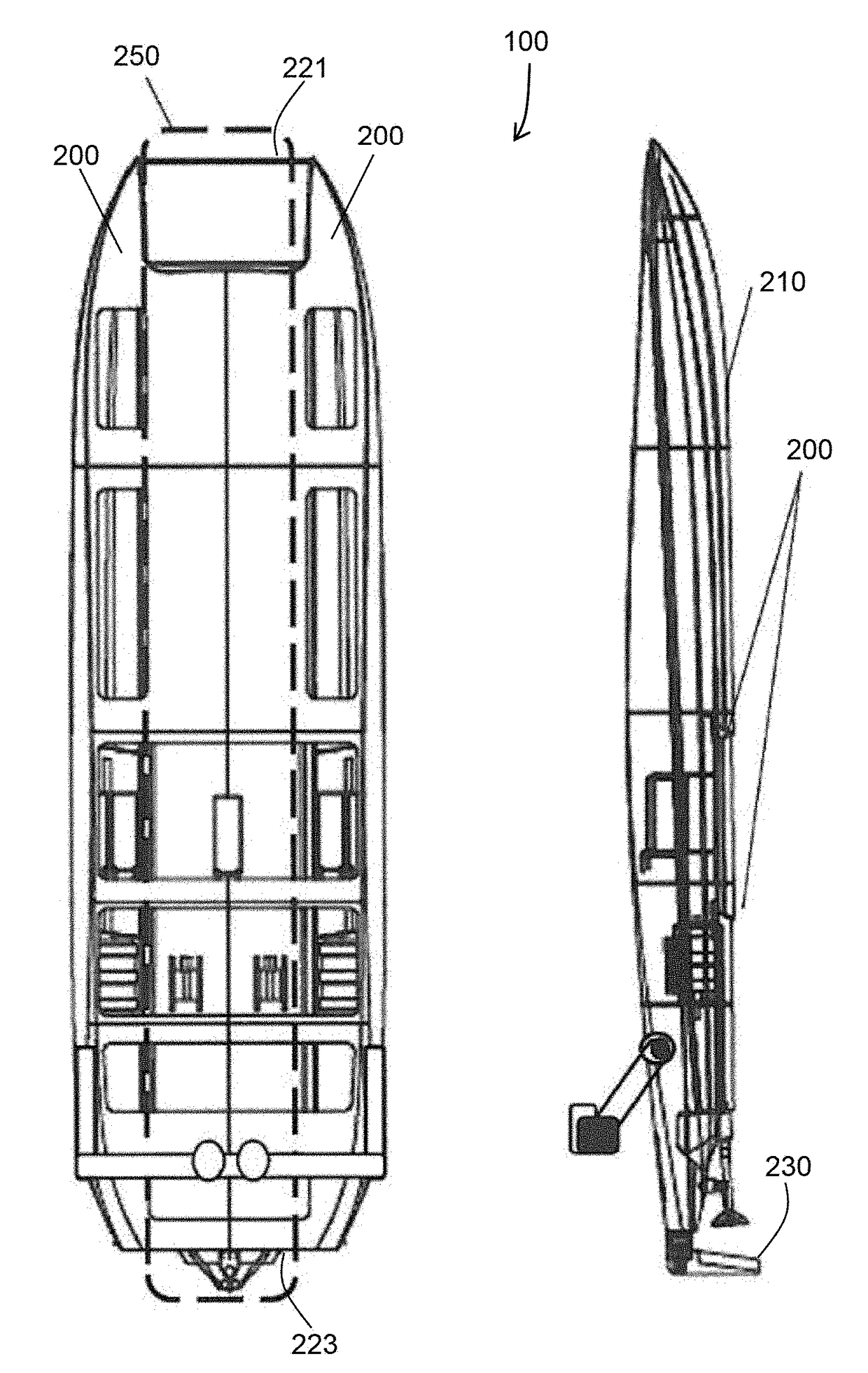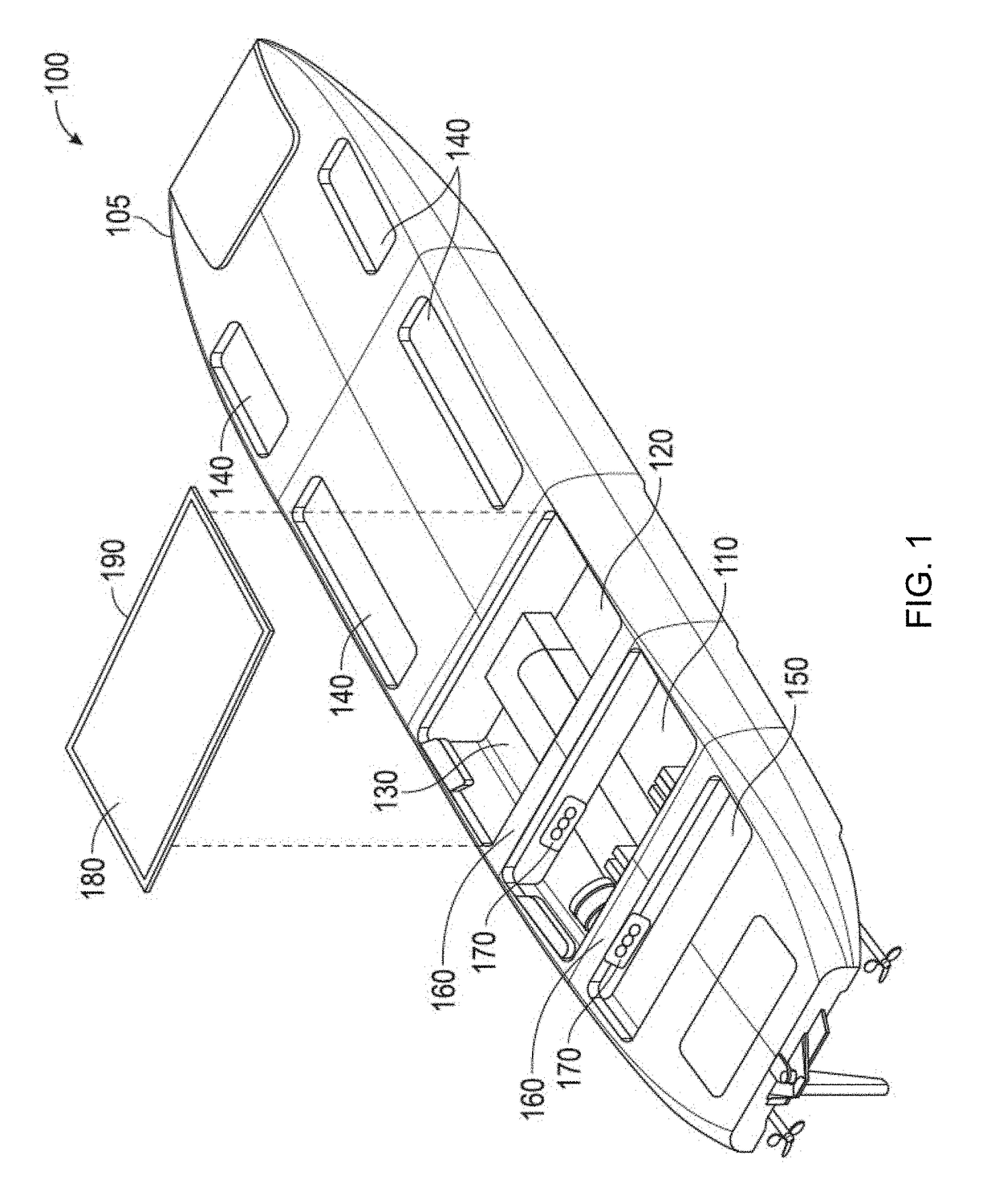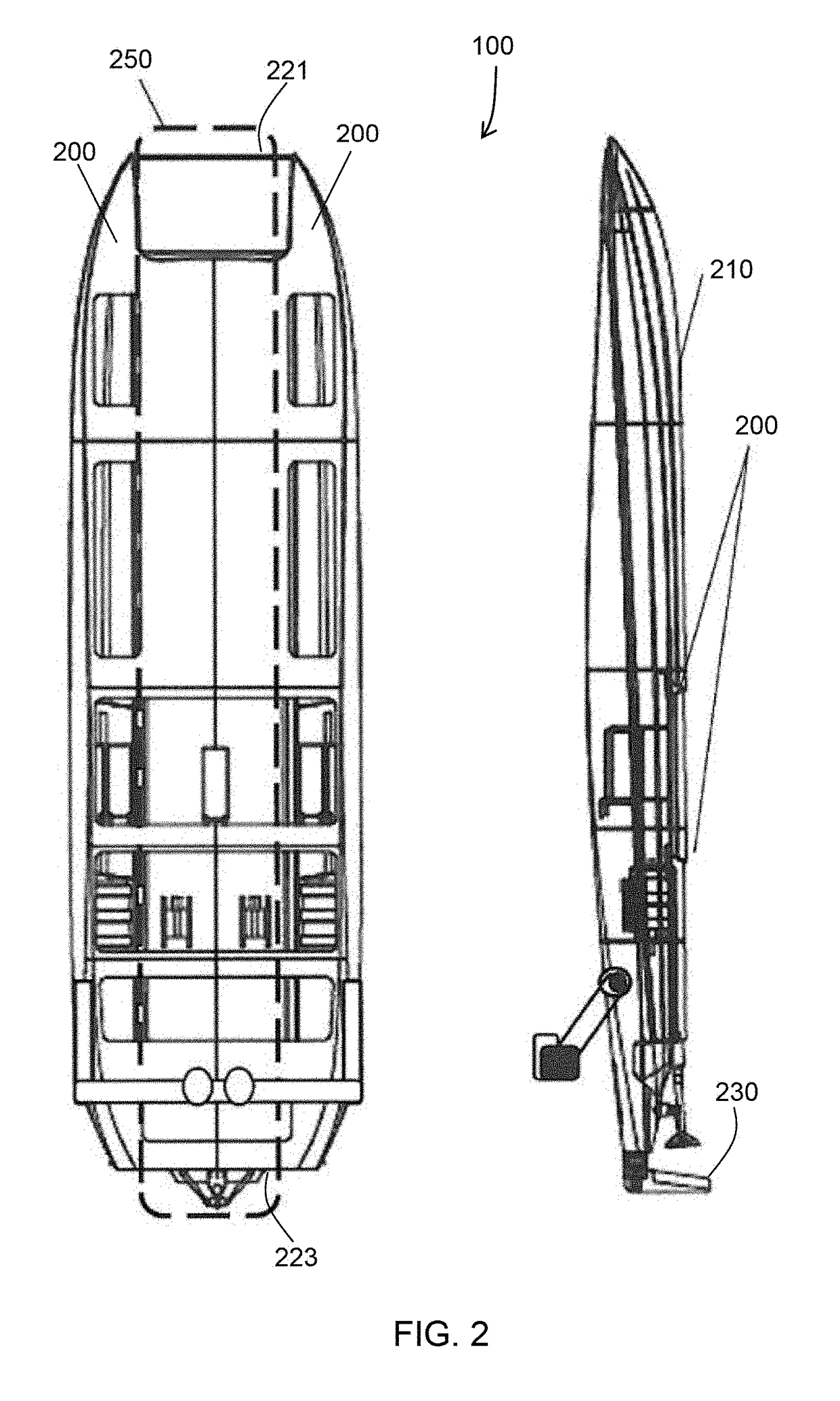Systems and methods for payload integration and control in a multi-mode unmanned vehicle
a multi-mode, unmanned vehicle technology, applied in special-purpose vessels, aircraft convertible vehicles, instruments, etc., can solve the problems of limiting the range of unmanned vehicle characteristics, limiting the scope of conventional unmanned vehicle designs, and limiting the operational and performance envelope of vehicles designed for carrying people, so as to facilitate the execution of more complex missions, enhance vehicle utility, and enhance operational characteristics
- Summary
- Abstract
- Description
- Claims
- Application Information
AI Technical Summary
Benefits of technology
Problems solved by technology
Method used
Image
Examples
Embodiment Construction
[0065]The present invention will now be described more fully hereinafter with reference to the accompanying drawings. In which preferred embodiments of the invention are shown. This invention may, however, be embodied in many different forms and should not be construed as limited to the embodiments set forth herein. Rather, these embodiments are provided so that this disclosure will be thorough and complete, and will fully convey the scope of the invention to those skilled in the art. Those of ordinary skill in the art realize that the following descriptions of the embodiments of the present invention are illustrative and are not intended to be limiting in any way. Other embodiments of the present invention will readily suggest themselves to such skilled persons having the benefit of this disclosure. Like numbers refer to like elements throughout.
[0066]In this detailed description of the present invention, a person skilled in the art should note that directional terms, such as “abov...
PUM
 Login to View More
Login to View More Abstract
Description
Claims
Application Information
 Login to View More
Login to View More - R&D
- Intellectual Property
- Life Sciences
- Materials
- Tech Scout
- Unparalleled Data Quality
- Higher Quality Content
- 60% Fewer Hallucinations
Browse by: Latest US Patents, China's latest patents, Technical Efficacy Thesaurus, Application Domain, Technology Topic, Popular Technical Reports.
© 2025 PatSnap. All rights reserved.Legal|Privacy policy|Modern Slavery Act Transparency Statement|Sitemap|About US| Contact US: help@patsnap.com



